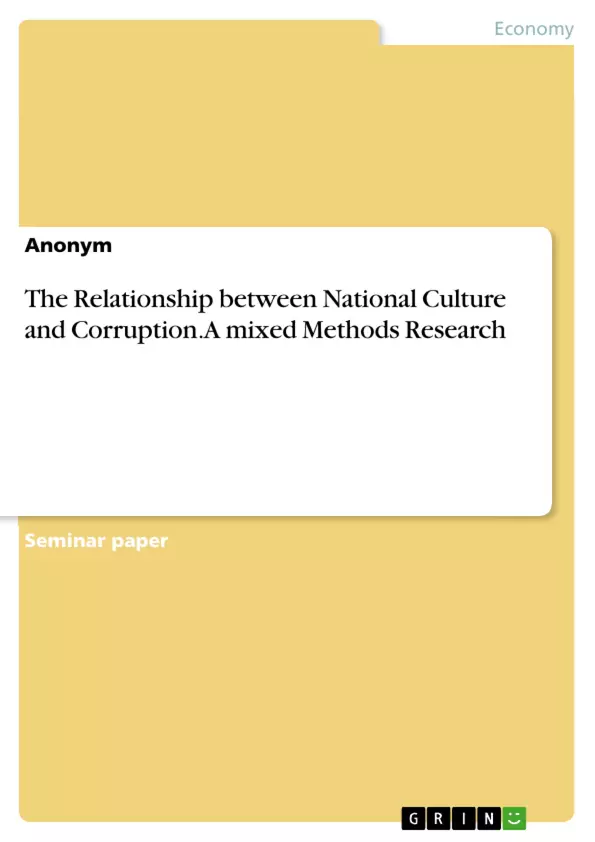This work focuses on the relationship between national culture and corruption. After conducting a thorough study on the topic and taking insights from the interviews with experts, this paper aims to fill in this gap and make a contribution to the research topic by taking a cultural approach, in which determinants of corruption in are examined.
This paper will provide new findings how the cultural aspects interrelate with the two concepts, i.e. economic and institutional. The research will close the gap between the economic and institutional approaches that currently exist in the academic world. The relevance of this consideration is justified because the costs associated with corruption do not affect only the economic outcomes. Its impact on society is much wider, what makes it relevant to research the cultural aspect of corruption and, therefore, close this existing gap.
Corruption has become one of the forefront managerial issues both at the national and international levels. The concept of corruption is complex and multilateral and it varies across countries. Its different types of expressiveness and intensity can be felt all over the world and have the potential to cause severe complications for a country’s economy and environmental sustainability.
Inhaltsverzeichnis (Table of Contents)
- Introduction
- Literature Review
- Research Method
- Study 1: Quantitative Analysis
- Sample
- Data Analysis
- Quantitative findings
- Study 2: Qualitative Analysis
- Sample approach
- Data collection
- Data Analysis
- Qualitative findings
- Discussion
- References
Zielsetzung und Themenschwerpunkte (Objectives and Key Themes)
This research aims to investigate the relationship between national culture and corruption, focusing particularly on the public sector. By examining cultural factors alongside economic and institutional considerations, this study seeks to broaden our understanding of corruption's complexities and provide a more comprehensive framework for its analysis.
- The influence of national culture on corruption levels.
- The interplay of cultural, economic, and institutional factors in shaping corruption.
- The impact of corruption on economic development, social well-being, and public institutions.
- The application of Hofstede's cultural dimensions to understand corruption patterns across nations.
- The significance of cultural factors in explaining the varying levels and forms of corruption observed globally.
Zusammenfassung der Kapitel (Chapter Summaries)
The introduction provides a comprehensive overview of corruption, highlighting its global prevalence and detrimental effects. The literature review delves into various theoretical perspectives on culture and corruption, particularly exploring Hofstede's six cultural dimensions and their potential application to understanding corruption dynamics.
The research method section outlines the mixed-methods approach employed in the study, detailing both the quantitative and qualitative research strategies. Study 1 focuses on quantitative analysis, exploring the relationship between cultural dimensions and corruption levels using statistical techniques. Study 2 adopts a qualitative approach, utilizing interviews with experts to gather in-depth insights and perspectives on the cultural determinants of corruption.
Schlüsselwörter (Keywords)
This research examines the relationship between national culture and corruption, employing Hofstede's cultural dimensions and mixed-methods research. Key themes include the influence of cultural values on corruption, the impact of corruption on economic development, the interplay of cultural, economic, and institutional factors, and the importance of a comprehensive understanding of corruption dynamics.
- Citar trabajo
- Anonym (Autor), 2019, The Relationship between National Culture and Corruption. A mixed Methods Research, Múnich, GRIN Verlag, https://www.grin.com/document/494508



